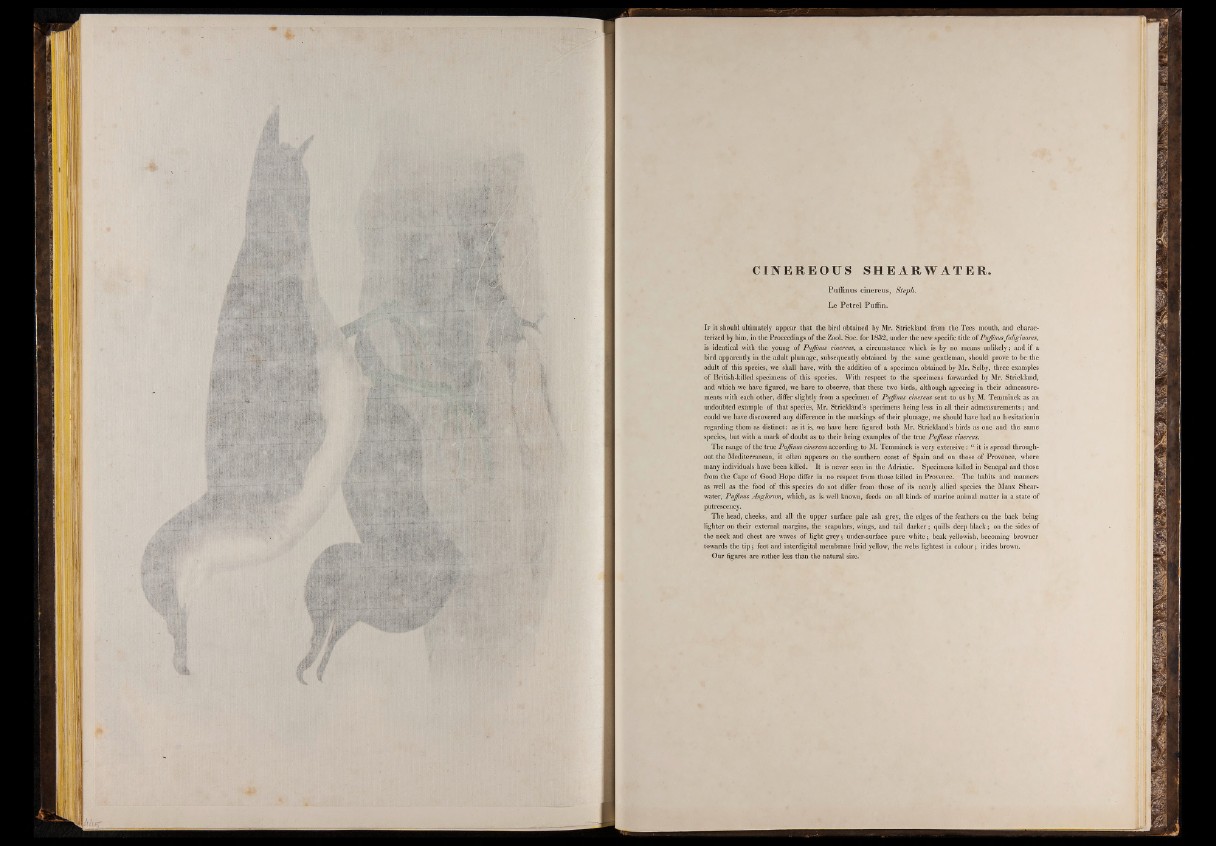
CINEREOUS SH E A RWA T E R .
Puffinus cinereus, Steph.
Le Petrel Puffin.
If it should ultimately appear that the bird obtained by Mr. Strickland from the Tees mouth, and characterized
by him, in the Proceedings of the Zool. Soc. for 1832, under the new specific title of Puffinus fuliginosus,
is identical with the young of Puffinus cinereus, a circumstance which is by no means' unlikely; and if a
bird apparently in the adult plumage, subsequently obtained by the same gentleman, should prove to be the
adult of this species, we shall have, with the addition of a specimen obtained by Mr. Selby, three examples
of British-killed specimens of this species. With respect to the specimens forwarded by Mr. Strickland,
and which we have figured, we have to observe, that these two birds, although agreeing in their admeasurements
with each other, differ slightly from a specimen of Puffinus cinereus sent to us by M. Temminck as an
undoubted example of that species, Mr. Strickland’s specimens being less in all their admeasurements; and
could we have discovered any difference in the markings of their plumage, we should have had no hesitationin
regarding them as distinct: as it is, we have here figured both Mr. Strickland’s birds as one and the same
species, but with a mark of doubt as to their being examples of the true Puffinus cinereus.
The. range of the true Puffinus cinereus according to M. Temminck is very extensive: “ it is spread throughout
the Mediterranean, it often appears on the southern coast of Spain and on those of Provence, where
many individuals have been killed. It is never seen in the Adriatic. Specimens killed in Senegal and those
from the Cape of Good Hope differ in no respect from those killed in Provence. The habits and manners
as well as the food of this species do not differ from those of its nearly allied species the Manx Shearwater,
Puffinus Anglonm, which, as is well known, feeds on all kinds of marine animal matter in a state of
putresceucy.
The head, cheeks, and all the upper surface pale ash grey, the edges of the feathers on the back being
lighter on their external margins, the scapulars, wings, and tail darker; quills deep black; on the sides of
the neck and chest are waves of light grey; under-surface pure white; beak yellowish, becoming browner
towards the tip; feet and interdigital membrane livid yellow, the webs lightest in colour; irides brown.
Our figures are rather less than the natural size.